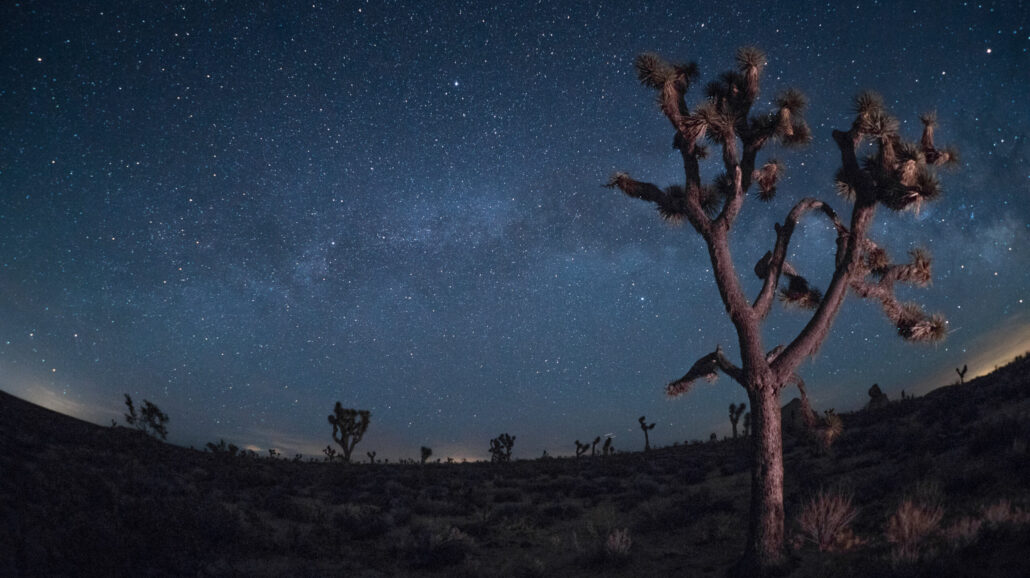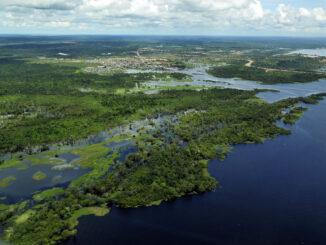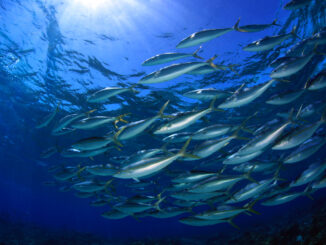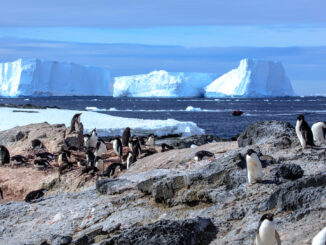
National, state, and provincial parks are renowned for amazing views, beautiful wildlife, and a variety of environments where visitors can pursue outdoor activities like hiking, fishing, camping, and more.
Most of the time, recreational activities in parks occur during the daytime, but parks everywhere are increasingly organizing nighttime and night sky-themed events to entertain visitors. And a new study shows why.
Next week, Exmoor National Park in the United Kingdom will host a type of festival that’s increasingly common at the world’s public lands.
The Exmoor Dark Skies Festival will run from October 13 (Friday the 13th) to October 29. Billed as a “celebration of night skies” the festival will feature star gazing, astronomy lessons, nighttime hikes, evening yoga classes, and more. The festival has grown so popular over the years that organizers are warning that interested participants should reserve their spots well in advance. Bookings for some events are already full.
The Exmoor Dark Skies Festival will afford Britain’s “city dwellers a chance to escape the light pollution of that metropolis and witness the all-too-rare site of a star-filled sky.”
Exmoor National Park is hardly the only public park featuring this type of event.
Night sky events at parks proliferate
In the United States, Joshua Tree National Park in California will host its Night Sky Festival this month, from October 13-14. The National Park Service is organizing that event with the help of area non-profits.
NPS is getting all too familiar with hosting dark-sky events. At least seven other national parks held night sky-themed events over the summer: Grand Canyon, Badlands, Bryce Canyon, Shenandoah, Sequoia, Kings Canyon, and Great Basin National Parks. At many of these events, astronomers and astrophysicists were invited to give guest lectures.
Night sky events have become a global phenomenon, as indicated by Exmoor’s popular festival. Warrumbungle National Park in New South Wales, Australia touts itself as a dark sky attraction and the first officially recognized International Dark Sky Park in the Southern Hemisphere. Public parks in 22 countries have earned that designation according to the International Dark-Sky Association.
Smaller yet well-attended parks are getting in on the action, too.
Five Utah state parks held dark sky festivities over the summer. Arizona State Parks and Trails has announced “star parties” happening at six Arizona state parks beginning October 7. The Texas Parks and Wildlife Department is organizing more than a dozen similar events this month at parks scattered throughout that state. State parks in Minnesota, Virginia, and other jurisdictions have all hosted them.
Glenn Orzepowski is a production manager and graphic designer who lives in New Jersey. He’s also an avid astrophotographer, spending hours training his telescope at the night sky to capture remarkable images of nebulae and other celestial phenomena. He says one of his favorite spots for astrophotography is Cherry Springs State Park in north-central Pennsylvania, about a five-hour drive from his home.
“The International Dark-Sky Association gave Cherry Springs State Park a Gold Level Dark Sky Park designation,” he told Public Parks. “In my opinion, that designation is well earned. It is my understanding that the skies over Cherry Springs State Park are among the darkest in the northeast.”
Orzepowski lamented how worsening light pollution has robbed him and millions of others of clear views of the Milky Way and constellations. Cherry Springs State Park is one of a growing number of night-sky refuges determined to protect the clear views that are left, and perhaps even bring some star-filled skies back.
Strong support for preserving night skies
New academic research sheds additional light on the popularity of dark sky events.
In the Journal of Environmental Management, a research team from NPS, the US Geological Survey, and Utah State University says it surveyed visitors to nine national and state parks in Utah at dusk to better gauge how they spend their evenings at the parks. They also wanted to weigh the degree to which the public approves or disapproves of park managers’ nighttime-specific organized activities or recreational opportunities and the rules governing them.
“Findings indicate broad support for management actions designed to improve night sky quality,” the study concluded, “with between 74 percent and 89 percent of all visitors supporting seven different management actions.”
A majority of the visitors polled for the study said parks managers should do more to preserve the night skies and guard against light pollution.
Respondents tended to not like rules that restricted how many lights visitors or campers could use at parks at night, but they overwhelmingly supported six other types of management interventions by wide margins, including dimming lights in public areas, adjusting lights in ways to minimize disturbance to animals, and installing shields on lights to prevent upward light pollution. The poll’s participants even said they approved of park authorities making parks darker at night by eliminating lighting in some areas.
“Results show nighttime visitors overwhelmingly support management actions to protect night sky quality at state parks and national park units,” Beeco et al. reported in their study. “Interestingly, even visitors who are not dependent on dark skies support these actions.”
Lessons for park managers everywhere
Orzepowski is familiar with these types of dark sky rules as they are enforced at Cherry Springs State Park. “The park has strict rules in place for stargazers,” he explained. “For example, you are not allowed to turn on your headlights at night, interior car lights must remain off, no campfires, and no white flashlights.”
He said the Pennsylvania state park has set itself up as a venerable paradise of amateur astronomers and astrophotography hobbyists. “The park has a field with electrical ports set up throughout,” Orzepowski noted. “Amateur astronomers use these ports to power their telescopes, cameras, and star tracking mounts. As a dedicated astronomy park, you can go to Cherry Springs year-round to view the stars from dusk to dawn.”
Orzepowski clarified that he’s never actually attended a formal dark sky event or festival. “I never participated in any park-organized dark sky activities,” he said.
Plenty of other visitors do, however, and interest in spending time at national, state, and provincial parks and preserves at night is growing among the park-visiting public. Managers would be wise to pay attention to this trend, Beeco et al. suggest in their research article.
“Managers can use results from this study as a barometer to assess possible lighting improvement actions, most of which are highly supported,” they noted. “While all the state and national park units in this sample were already certified Dark Sky Parks, managers in other parks could use this information to determine whether to pursue [International Dark-Sky Association] Dark Sky Park certification, albeit with the ultimate goal of preservation of the night sky regardless of certification.”
©2025 Public Parks
Park Info
Location:
Worldwide
More Information:
https://www.sciencedirect.com/science/article/pii/S0301479723016663?via%3Dihub



